Even before the global COVID-19 pandemic broke out, food insecurity was a serious concern throughout sub-Saharan Africa. According to the Food and Agriculture Organization, 239 million people in the region were undernourished as of 2018. Since long before the COVID-19 pandemic, these chronic food crises have been driven by a variety of factors, including economic shocks, climate, and conflict. Indeed, areas that are severely affected by climate change—particularly the Sahel region, the Horn of Africa, and southern Africa—have many food insecure people. In East Africa, intercommunal violence and armed conflicts are perpetuating instability and tensions, particularly in South Sudan, and are the driver of large refugee populations in neighboring countries, such as Uganda. In Nigeria, the region’s most populous country, the number of undernourished people was estimated at more than 25 million in 2018—up by 180 percent over the past decade.
This year, an unprecedented locust outbreak that’s ravaging parts of the Horn of Africa could result in $8.5 billion in crop and livestock losses, severely reduced harvests, and less food in markets. Climate shocks, which have been increasing in number and severity in recent years, could also hurt agricultural production. These multiple crises, unfolding at the same time, threaten to swell the ranks of Africa’s hungry and vulnerable people. Refugees, internally displaced people, and people living in areas marked by conflict and fragility like the Sahel are especially at risk.
Now, COVID-19 poses challenges on top of this picture of risk and vulnerability.
For starters, border closures, lockdowns, and curfews intended to slow the spread of the disease are disrupting supply chains that, even under normal circumstances, struggle to keep markets well stocked and farmers supplied with necessary agricultural and livestock inputs such as quality seeds, fertilizer, and feeds. These disruptions could have a much larger economic impact in Africa—where farming accounts for about 60 percent of total employment—than in other regions of the world. In fact, agricultural production in Africa could contract between 2.6 and 7 percent if trade blockages persist.
Another notable factor is that most African countries rely heavily on food imports—the region imported more than 40 million tons of cereals in 2018—which makes the region especially vulnerable to the export bans that a few major food exporters have imposed in the wake of COVID-19. At the same time, currency depreciation—coupled with low foreign currency reserves, falling prices for export and cash crops, and plummeting revenues from stalled industries such as oil and tourism—is affecting several countries’ food purchasing power. African countries are also reporting shortages and price spikes for domestic food crops such as millet, sorghum, and maize. Rising food prices will contribute to lower purchasing power among both rural and urban consumers, given the rising share of food that is purchased (rather than grown) even by smallholder farmers—about 60 percent of the food consumed in the region is purchased from traditional and modern retail outlets in both rural and urban areas.
On April 16, the ministers for agriculture of African Union member states publicly committed to minimizing food system disruptions and ensuring food security and nutrition for all their citizens—especially the poorest and most vulnerable—during and after the COVID-19 pandemic. In their statement, the ministers urged governments to “prioritize the food and agriculture system as an essential service” and “recognize that all types of food systems—modern, traditional (open markets, small stores) and informal (street vendors)—play critical roles in serving different markets.” In doing so, they joined the ranks of other countries and organizations, such as the G-20 and ASEAN, that have recognized that essential steps must be taken to keep food moving in this exceptional moment.
The ministers called on partners to step up their support to avoid a potential humanitarian disaster. Helping African countries withstand the crisis and strengthen their food systems in the long run will require a range of immediate and longer-term actions. Policymakers should make supporting livelihoods through expanded safety nets and productive programs a high priority: After all, people need income to buy food. Policymakers should also remove artificial barriers to domestic trade and facilitate links between farmers and markets.
Responding to food emergencies, ensuring that food needs are fully met, and restoring livelihoods should be an immediate focus for policymakers. In some places, policymakers are already taking these steps: In Chad, a government project with support from development partners is providing food kits, setting up cereal banks, and distributing seeds for future harvests to help households that may go hungry due to COVID-19. Interventions like these will help address not only the immediate need for food but also preserve the productive capacity of smallholder farmers who might start eating their seeds to stave off hunger—ending up with nothing to sow in the upcoming agricultural season. In Zambia, the government is taking advantage of the country’s recent bumper maize harvest to boost its emergency food reserves. Zambia’s Food Reserve Agency (FRA) will procure around 1 million metric tons of maize from farmers—more than double the annual average of the last several years—so that it has a reliable supply in the event of a food emergency.
In the long term, it’s critical that countries take the steps to build resilient, climate-smart, and competitive food systems. In Uganda, a government project is being refocused to provide hired tractors and ox-plows to communities that have traditionally relied on hand hoes. In Senegal, an upcoming program aims to build producers’ resilience to climate change and market shocks by increasing the productivity of groundnut-based agricultural systems; it also aims to diversify agriculture by supporting the development of other value chains. And, in Kenya, digital technologies are being leveraged through ongoing partnerships with 15 AgTech startups to transform the delivery of inputs, soil testing, crop insurance, credit, extension advice, and market linkages. Projects like these can enable farmers to overcome temporary COVID-related constraints and ensure better targeting and more effective service delivery, especially in remote areas, over the long run.
By taking action now, countries can build more resilient and productive food systems in sub-Saharan Africa that will support food security during the pandemic and beyond.
The Brookings Institution is committed to quality, independence, and impact.
We are supported by a diverse array of funders. In line with our values and policies, each Brookings publication represents the sole views of its author(s).

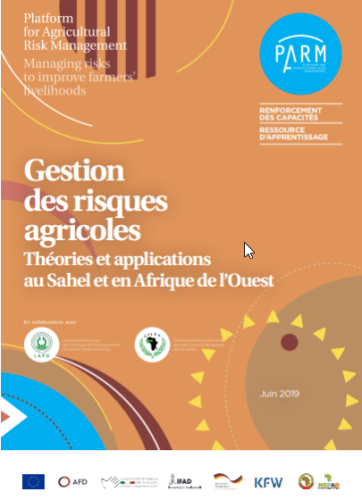

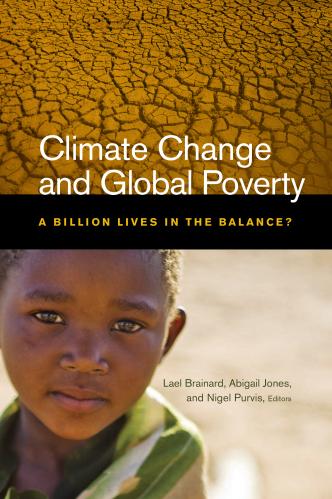
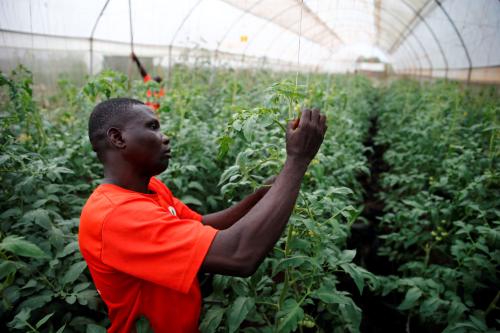
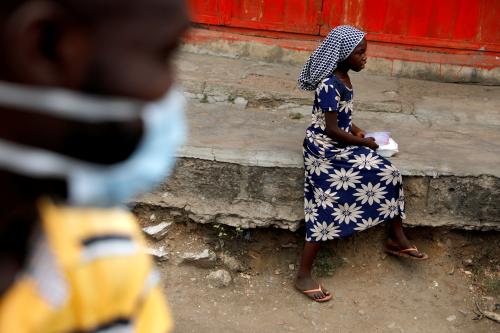
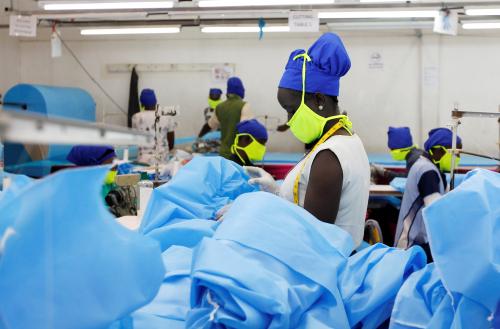
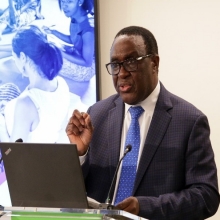



Commentary
Protecting food security in Africa during COVID-19
May 14, 2020